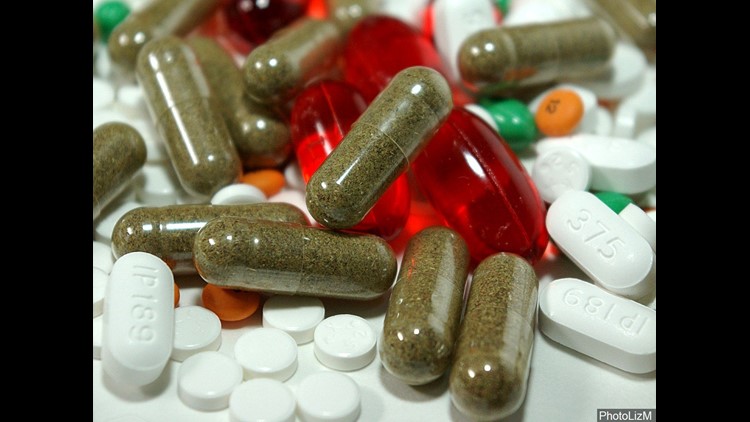An estimated 1 in 250 Americans lands in the hospital emergency department each year because of a medication-related reaction or problem, a new federal study finds.
Among adults 65 and older, the rate is about one in 100, the study authors said.
Remarkably, the medicines causing the most trouble haven’t changed in a decade, the researchers noted.
Blood thinners, diabetes medicines and antibiotics top the list. These drugs accounted for 47 percent of emergency department visits for adverse drug events in 2013 and 2014, according to the analysis.
Among older adults, blood thinners, diabetes medicines and opioid painkillers are implicated in nearly 60 percent of emergency department visits for adverse drug events.
“The same drugs are causing the most problems,” said study co-author Dr. Daniel Budnitz.
The study doesn’t tease out what went wrong. The reasons likely vary from one drug to the next, said Budnitz, director of the medication safety program at the U.S. Centers for Disease Control and Prevention.
People on the blood thinner warfarin (Coumadin), for example, must have their blood levels checked regularly due to the major risk of internal bleeding. Problems arise when there is insufficient monitoring or dose adjustment of these so-called anticoagulants, or when drug interactions occur, Budnitz explained.
Diabetic patients taking insulin run into trouble when their blood-sugar levels fall too low, he added. If they forget to eat or accidentally administer the wrong dose, they can pass out, fall and break a hip, he said.
“It’s hard, often, to do the right thing every single time,” Budnitz said.
While medication safety has improved in hospitals, reducing harm from the medicines people take outside of the hospital remains a challenge, the study authors noted.
Ninety percent of U.S. prescription spending occurs in outpatient settings, they said.
Older patients often have multiple health conditions requiring complex medication regimens prescribed by different clinicians. This makes them particularly vulnerable, the study suggests.
Illness such as diabetes and heart disease become more common with age and are treated with drugs commonly linked to emergency department visits, Budnitz explained. Also, “having chronic illnesses can make adverse events more serious when they do occur,” he said.
Michael Cohen, president of the nonprofit Institute for Safe Medication Practices, said it’s important to document trends in adverse drug events.
“They’ve been focusing on opioids, anticoagulants and antidiabetic drugs like insulin or the oral drugs that people take because these are the ones that are most likely to harm people,” Cohen said.
Budnitz, along with study lead author Nadine Shehab of the CDC and colleagues, examined data involving more than 42,000 emergency department visits in 2013 and 2014.
These cases involved prescription or over-the-counter medicines, dietary supplements, homeopathic products or vaccines identified as the reason for the visit.
Adverse drug events included allergic reactions to medicines, taking too much medication, or a child’s accidental ingestion of a medicine.
Twenty-seven percent of trips to the ER for drug-related reactions and other health problems were serious enough to require hospitalization, the researchers found.
Roughly one-third of visits to the emergency department for adverse drug events occurred among adults 65 and older in 2013-2014, versus one-quarter in 2005-2006. Older adults also had the highest hospitalization rates.
Among kids, antibiotics accounted for 56 percent of emergency visits for adverse drug events among children 5 years and under.
For kids ages 6 to 19, antibiotics were the most common drugs followed by antipsychotic drugs (4.5 percent), often prescribed for children with disruptive behaviors, the researchers reported.
Overall, an estimated 1.3 million emergency department visits for adverse drug events occurred each year of the two-year study period, Budnitz said. That’s up from about 700,000 visits per year in 2005 and 2006, he said.
But “it’s hard to say that the rate changed or didn’t change” because the research team wasn’t able to study how much more these medicines are being used, he explained.
Budnitz said new Medicare payment incentives may help reduce future adverse events by encouraging doctors to perform specific requirements, such as having patients on blood thinners participate in anticoagulation management programs.
Results of the government-funded study were published Nov. 22 in the Journal of the American Medical Association.
Dr. Chad Kessler, of the Durham Veterans Affairs Medical Center in North Carolina, said collaboration is key to reducing these adverse events.
“When administrators, physicians and other health care personnel as well as the public recognize how large a problem this is, only then can we take the needed steps to remedy this,” said Kessler, co-author of an editorial accompanying the study.



